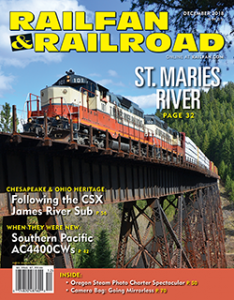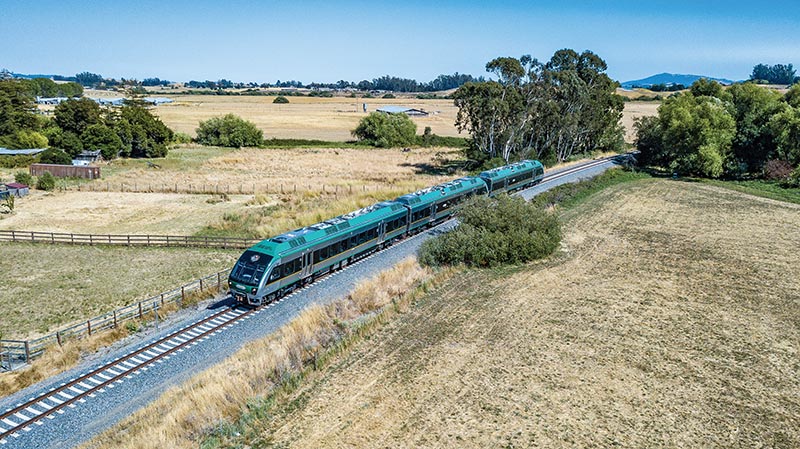 In the early part of this century, the hoped-for hero of U.S. passenger railroading was the diesel multiple unit (DMU), an updated version of the concept pioneered by Budd fifty years previous with the Rail Diesel Car. Transit agencies across the nation hosted demonstration runs of Colorado Railcar’s Aero DMU, and online forums buzzed with grand ideas for future service.
In the early part of this century, the hoped-for hero of U.S. passenger railroading was the diesel multiple unit (DMU), an updated version of the concept pioneered by Budd fifty years previous with the Rail Diesel Car. Transit agencies across the nation hosted demonstration runs of Colorado Railcar’s Aero DMU, and online forums buzzed with grand ideas for future service.
Yet the DMU concept never became popular. The Colorado design was plagued with teething problems, hampering sales. Other manufacturers were reluctant to create a new, FRA-compliant vehicle, limiting available equipment. Noncompliant DMUs, such as those used in Europe, could not be operated simultaneously with freight trains, reducing their utility. Moreover, the DMU actually ran counter to the very economics that make rail transport efficient, limiting passenger capacity in relation to labor costs.
One significant operator of modern DMUs is Sonoma Marin Area Rapid Transit in northern California. Launched in 2017, the 43-mile-long SMART links San Rafael to Santa Rosa, using Nippon Sharyo equipment. Ridership is modest, but on target, at 3,000 daily trips, with expansions underway.
Intrigued, I recently went to ride SMART from San Rafael to Santa Rosa and back, covering most of the system. I arrived early, waiting with several dozen others, not bad for midday. Departure time came and went, and there was no train in sight. There was no ticket agent to query at the station.

A SMART train rolls through Penngrove, Calif., on July 9, 2017. The special three-car consist was put together to handle the capacity crowds trying out the new commuter service. Jim Mauer photo
Using my smartphone, I checked the website. A notice posted that morning stated that there had been mechanical problems, and a bus bridge was being set up. There had been no further updates since then. The Twitter feed? Equally outdated. I called customer service, and after a touch-tone decision tree, and being placed on hold, the system eventually hung up on me. On a second try, I get through to someone who, around smacks of eating lunch, informed me that the bus bridge was now in place. Glancing around, I see no obvious shuttle, no direction signs, improvised or otherwise. When I tell the employee that there are several dozen others waiting on the platform, equally clueless, he replies that “a supervisor will be along soon.”
I never met this supervisor. After another 20 minutes, I gave up, abandoning the other hopeful riders on the platform.
American passenger rail is widely criticized as inferior to operations in other countries, especially those in Europe or Asia. As such, fixes are frequently debated, ranging from deploying unconventional equipment to abandoning traditional operating scenarios for cost-saving measures.
As my experience with SMART illustrates, our problems are more fundamental. Too often, we invest hope in radical technologies but get the basics wrong. We splurge on infrastructure, but only reluctantly fund the operation. We forget about the customer, the rider. If we really want to have quality passenger rail, we need to spend less time dreaming of technological fixes and financial shortcuts, and more time providing what used to be the key strength of American railroading — service.
—Consulting Editor ALEXANDER BENJAMIN CRAGHEAD is a transportation historian, photographer, artist, and author.



